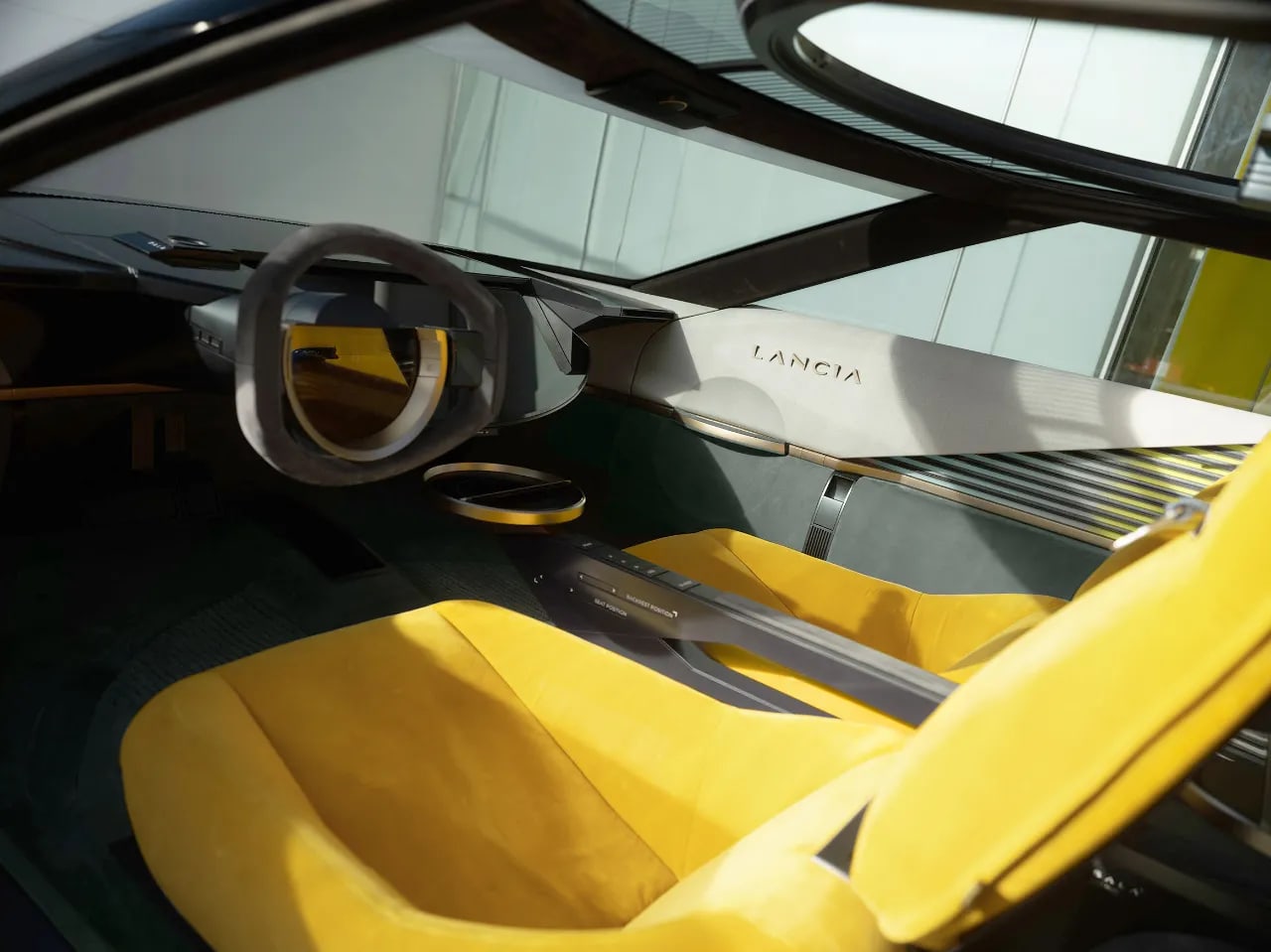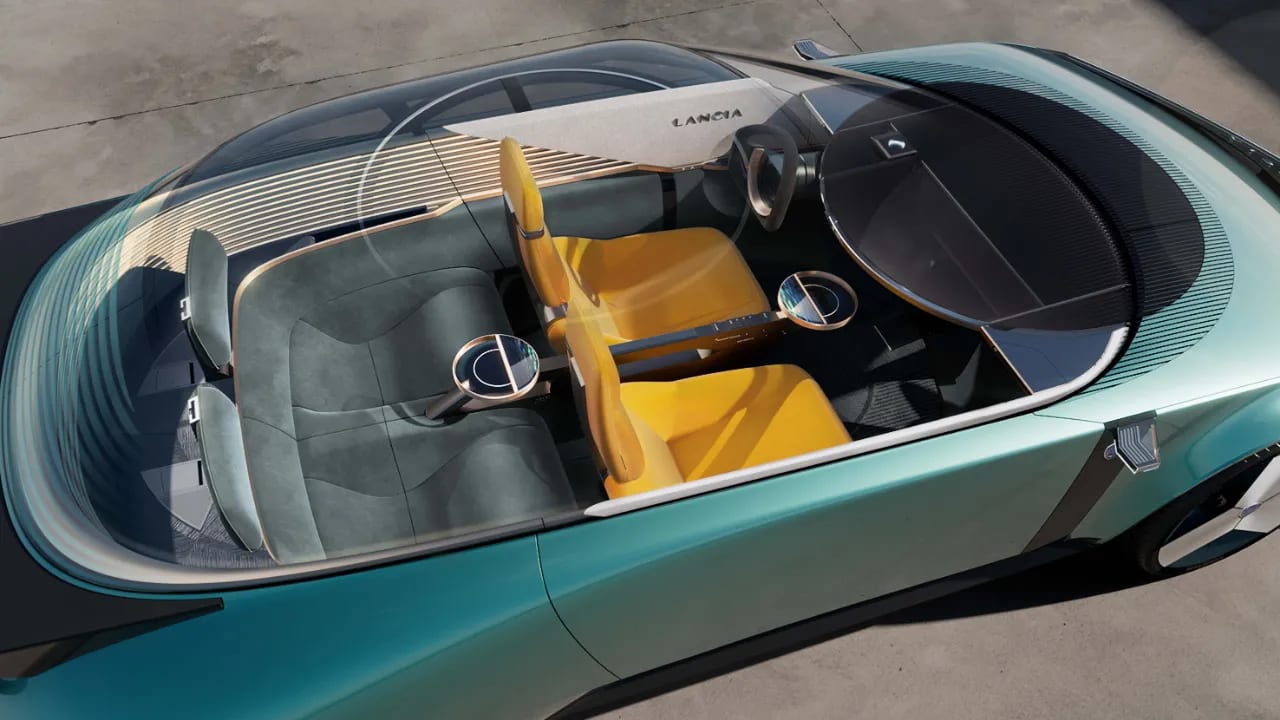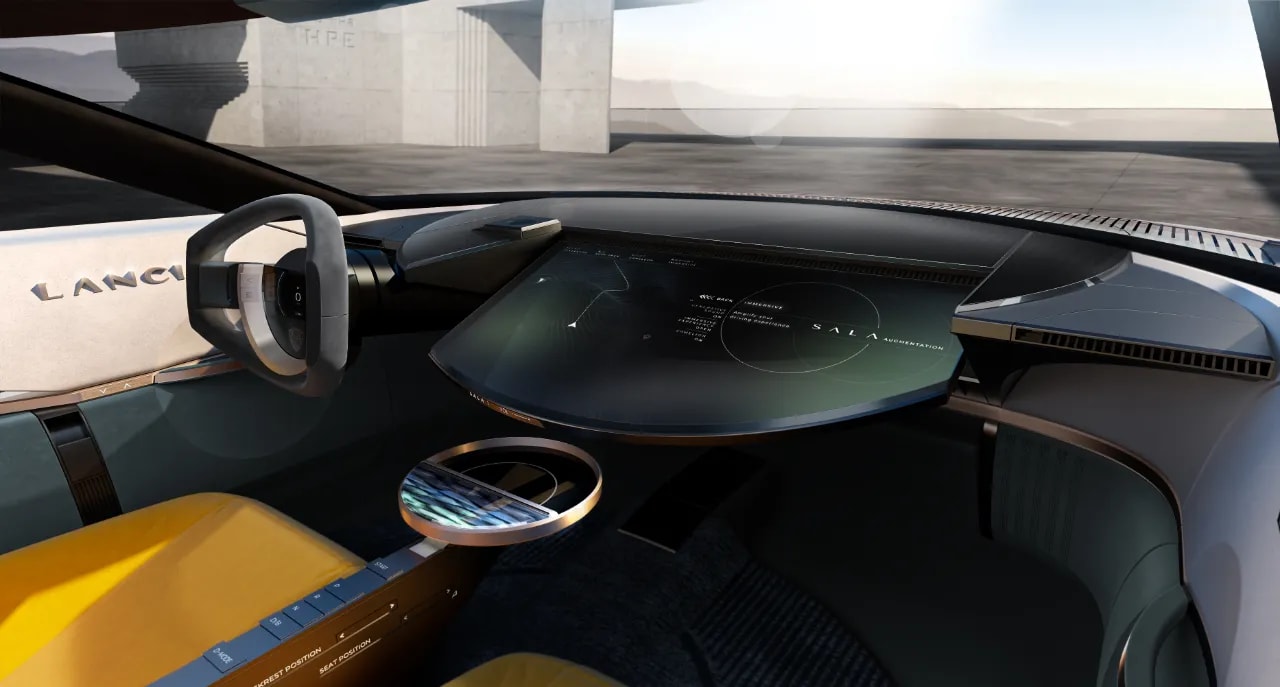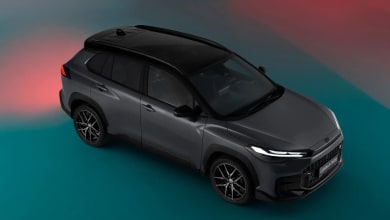Lancia has released some more images of its concept that prepares us for the coming years is the transition towards producing only electric vehicles starting from 2026, with the first model likely being a sedan, possibly the Thema. In 2028, we will see the new Delta. Until then, some of the design elements from PuRa HPE, which combine features from Delta, Aurelia, Stratos, and 037, will be found in the upcoming Ypsilon, which is set to debut in hybrid and electric versions in 2024.
The Lancia Pu+Ra HPE is a cutting-edge, 100% electric vehicle that boasts an impressive range of over 700 km, a quick charging time of just over 10 minutes, and a remarkably low energy consumption of less than 10 kWh per 100 km. What sets it apart is its unique collaboration with Cassina, a leading luxury furniture brand, which brings a distinctively Italian “home feeling” experience to the car.
In addition, the Lancia Pu+Ra HPE is also the first car to feature the innovative S.A.L.A. virtual interface, which will be introduced in the new Ypsilon as well. With S.A.L.A., Lancia becomes the first Stellantis brand to adopt cutting-edge technologies such as Chameleon and TAPE (Tailored Predictive Experience), which centralize functions such as audio, climate control, and lighting, allowing the car’s interior environment to be customized with a simple touch or voice command. This truly sets the Lancia Pu+Ra HPE apart as a trailblazer in the world of automotive innovation.
Lancia Pu+Ra HPE is the name of the concept, where Pu+Ra refers to the brand’s new pure and radical design language, while HPE stands for High Performance Electric for a vehicle that is, as claimed, both eco-friendly, exciting, and advanced. The HPE (High Performance Estate) acronym was first used in the 1970s for the Lancia Beta, becoming a symbol of sportiness and practicality.
Progressive Green is the name of the color of Lancia Pu+Ra HPE, “progressive” as it looks towards the future of the brand and tomorrow’s customers, and “green” for its sustainability value. The bluish-green color with a warm golden tone, achieved with state-of-the-art liquid metal pigments, pays homage to the historic and timeless Lancia Flaminia Azzurro Vincennes.
The continuous dialogue between the past and the future is expressed through the flowing side lines that descend towards the rear of the vehicle, reminiscent of the Aurelia and Flaminia, with a sleek design. The new Lancia logo stands out on the side, representing the brand’s new graphic codes and reinterpreting all the historical elements of the logo (the steering wheel, the flag, the shield, the spear, and the inscription) in a modern key. The dialogue between the past and the future continues at the rear, where we find the iconic round taillights, inspired by the brand’s most brutal and radical soul, with a clear reference to the legendary Lancia Stratos. The new iconic Lancia lettering is also found between the taillights.
The front represents a reinterpretation of the historic Lancia grille, now projected into the future through three rays of light that make it iconic, memorable, and recognizable from afar. Above the grille, the new Lancia lettering stands out, created with an original font inspired by the world of fashion. The innovative circular roof allows for a wide panoramic view, with a clear reference to architectural elements typical of the new Lancia Design. The rear window features another reference to the Lancia Beta HPE from the 1970s, with enveloping horizontal lines that reinterpret the Venetian blind sunshade structure in a contemporary way. The large windows make natural light a protagonist, evoking a sense of home feeling.
The interiors are the result of collaboration between Lancia and Cassina. The interiors of Lancia Pu+Ra HPE fully express coherence with the brand’s new pure and radical design language, thanks to the use of iconic and simple forms that break away from typical automotive language. Inside the concept, an eclectic space inspired by interior design, contemporary home atmosphere, and fluid architecture is recreated, with a high attention to detail in an overall composition of pure forms. Inspiration from Italian furniture design is evident in the round carpet and the front seats, which draw inspiration from Vico Magistretti’s Maralunga armchairs for Cassina.
The two separate single seats feature unique proportions and a distinct chromatic character. Pure geometric forms are also evident in the innovative round coffee tables, the central console, and even the dashboard, which defies typical automotive design and is created from a single iconic circular glass element with sharp cuts. The large windows allow natural light to flood the cabin, creating a welcoming environment, a space to be lived in, that conveys the warmth of a cozy home. Lastly, the Venetian blinds harken back to the iconic Lancia Beta HPE and the world of architecture, casting natural lights and shadows inside the cabin, while in the central part they become a luminous technological element that interacts with S.A.L.A. (the new virtual interface) and its functionalities.
Lancia will begin selling cars outside of Italy for the first time since 2017. Targeted countries are France, Spain, Portugal, Belgium and the Netherlands.



















